Holey citrus leaves! I’ve got more than usual this year. You too?
What small critters do you see more of during this cool and rainy spring around your yard? I see far more snails and slugs and earwigs than usual. But it is snails that are feeding on my citrus leaves the most right now. How do I know?
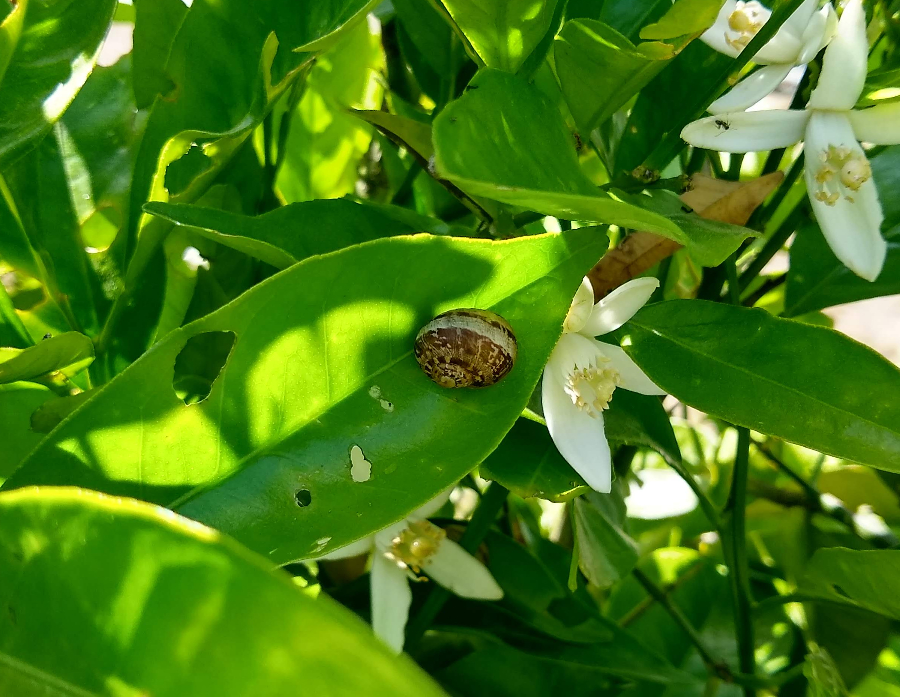
What to do
I think I have a high tolerance for animals joining me in eating from my fruit trees. In other words, in this case, I don’t mind some holes being eaten in the leaves of my citrus trees. But it has become too much on my small Cara Cara navel orange, where the snails are so numerous and the leaves so munched that I think it will soon affect the tree’s growth and fruit production.

So I’m doing two things. I’ve already removed a few dozen snails by hand with the help of my nine-year old son. He thinks it’s mean to just squish them, and I think he’s right. We dropped the snails in a bag and took them to a far corner of the yard to release.
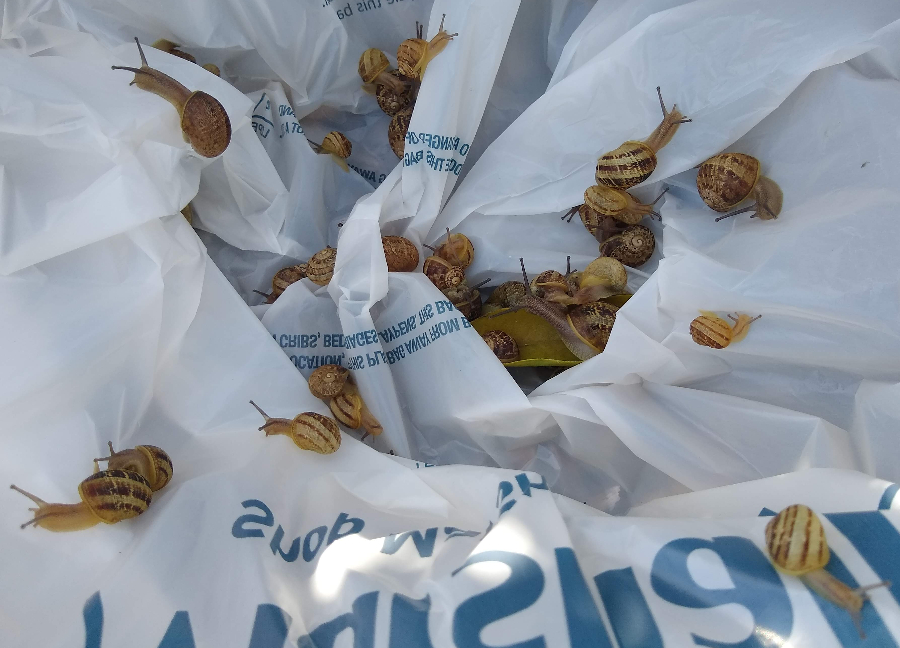
I’m also going to skirt the tree. Notice that it has branches touching the ground on all sides.
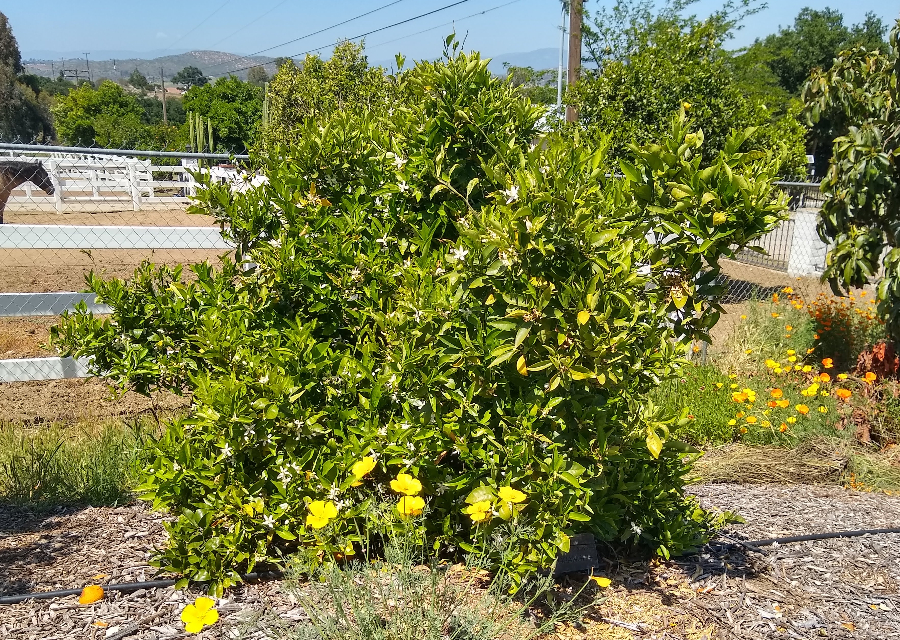
In contrast, notice that the adjacent Gold Nugget mandarin tree has fewer branches touching the ground.
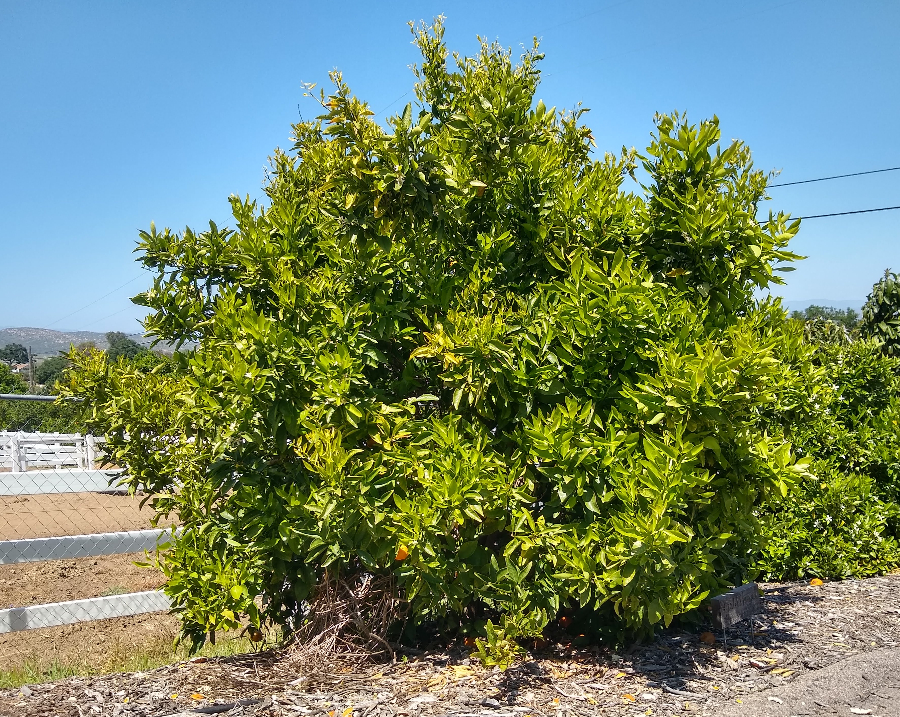
And the Gold Nugget tree has very few snails in its canopy, and almost no holey leaves. It’s common practice to skirt citrus trees in order to discourage snails from entering their canopies. The snails can still climb the trunk, but that is less convenient than having the equivalent of dozens of routes into the canopy if the branches are not pruned up off the ground.
Other methods of snail control include poisons, ducks, and copper bands wrapped around the trunk. Decollate snails are said to reduce numbers of the brown garden snails too. Read more about that here.
Other citrus leaf eaters
At other times of the year, you might see citrus leaves being eaten by bird poop caterpillars, also known as Papilio cresphontes or Heraclides rumiko, which turn into giant swallowtail butterflies.
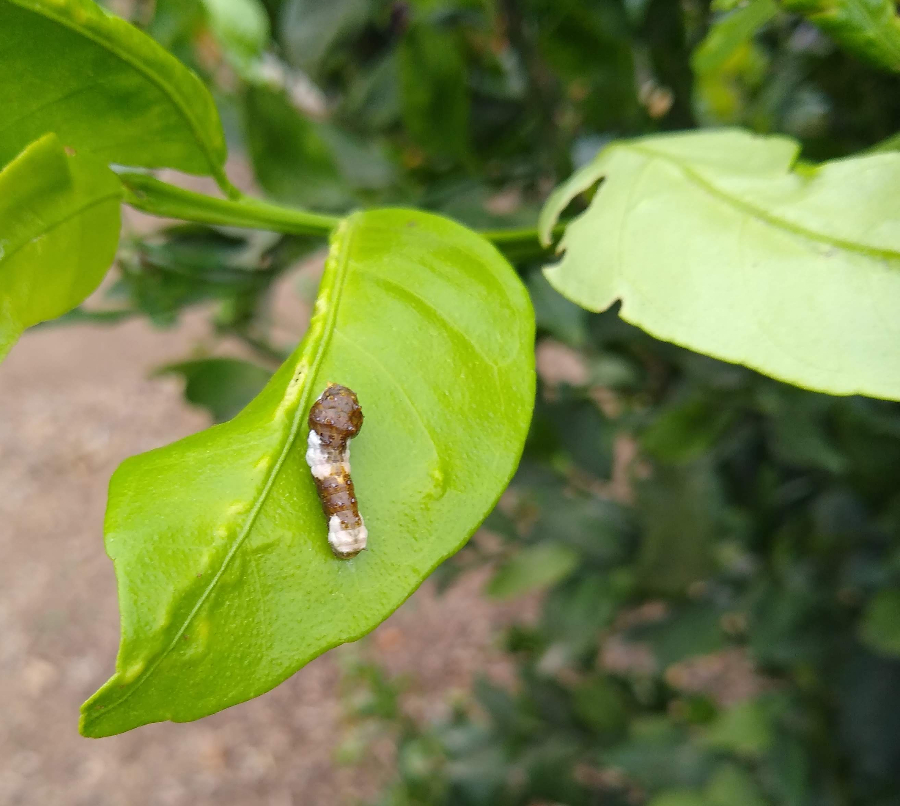
But no other critter eats holes in citrus leaves at the rate that snails can, as far as I’ve seen. Lucky for me, this only happens in a wet and cool winter and spring. If you live near the beach, it can happen every year and even into summer.
All of my Yard Posts are listed here.
Your support keeps the Yard Posts ad-free. Thank you.

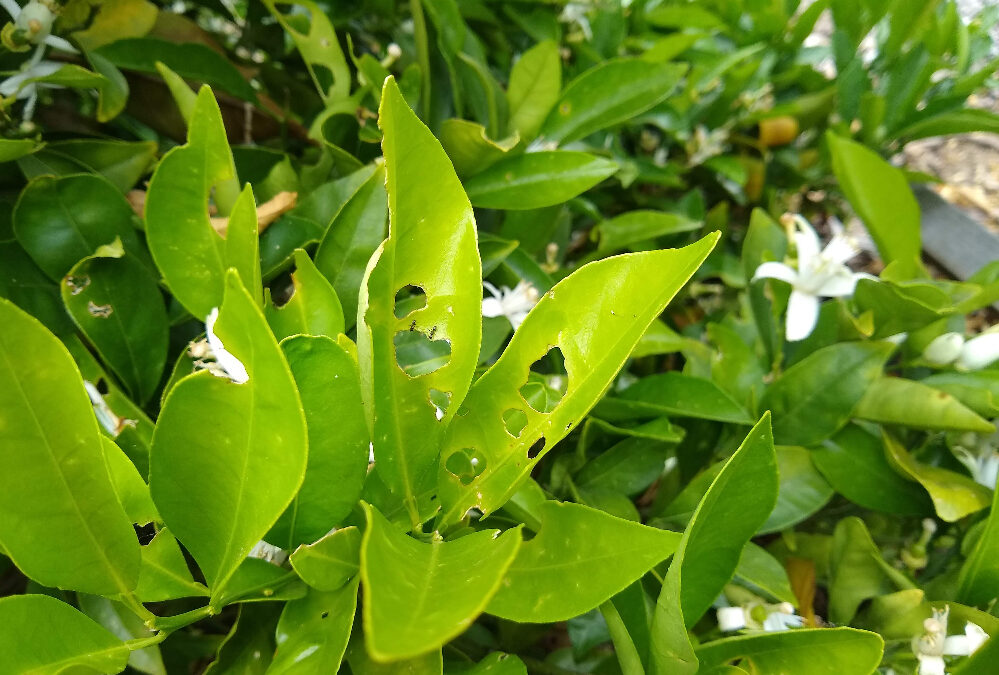


I’ve looked everywhere for Decollate snails in the last few months as my citrus, many plants, strawberries, cauliflower, and lettuce have all been hit so hard this season even when picking probably 30/day from the yard and trying just about everything else.
Any leads on where to find them?
https://www.naturesgoodguys.com/products/dellocate-snails-aka-rumina-decollata-50-count
Make sure they’re allowed in your state and county. Here in San Diego county they’re legal.
Yes, I’m here in north San Diego. While I’ve been able to find plenty of places that have sold them in the past like naturesgoodguys, I’ve found no one online or local that has seen them in quite some time. 🙁 Please do post if anyone knows of a place with them in-stock for shipping to approved areas.
Hi Mike,
I don’t know anything about the lack of availability of decollate snails right now, but I should note that I have them in my yard and have seen a great increase in the garden snails at the same time lately.
Also, in the link to the UC page above, it says they are “not always consistently effective” and may take 4-10 years to reduce the numbers of garden snails significantly.
My view at this point is not to hope for fast or amazing results from a decollate snail release.
Hi Greg! Thanks for all of your informative posts and videos! Have you dealt with any grasshoppers? I can’t seem to get them to stay away from my garden beds or away from my young avocado tree. But I also can’t get myself to kill them, they’ll fly away, except they keep coming back. I dealt with slugs earlier but managed those with sluggo bait and some hand picking. Right now I’m dealing with cutworms and cabbage loopers and even found some on my garlic and onions! First time gardener in Orange County – I’ll take any advice I can get 🙂 Thanks!
Hi Y,
I do have grasshoppers around, especially small ones right now. I also see them feeding on avocado leaves often.
Sorry, but I don’t know of an easy way to reduce their numbers or keep them off young avocado trees or vegetable plants. I leave them alone on big trees, but I grab them by the wings and feed to my chickens when I see them on young trees or certain vegetables.
Once when I lived in Africa a swarm of locusts descended on my neighbor’s vegetable plot and he doused them in kerosene and lit them and his whole garden on fire! A Pyrrhic victory.
Yikes! Well I will be grateful then, not having to deal with locusts or having to light my garden on fire (yet) LOL. Thanks! Shooing them off and keeping my dogs in the yard more has helped 🙂
My problem right now is that something is chewing the bark off of my Meyer lemon tree! Looks like it will not survive after thriving in our cool, coastal environment (they thrive in an area where not many fruits do). At first I thought it was banana slugs, but recently I found a chewed branch and what looked like rodent droppings. I suspect the same creature is taking the tops off of my lettuces.
Anyone ever experienced this? I’ve tried rat traps baited with peanut butter, but no luck.